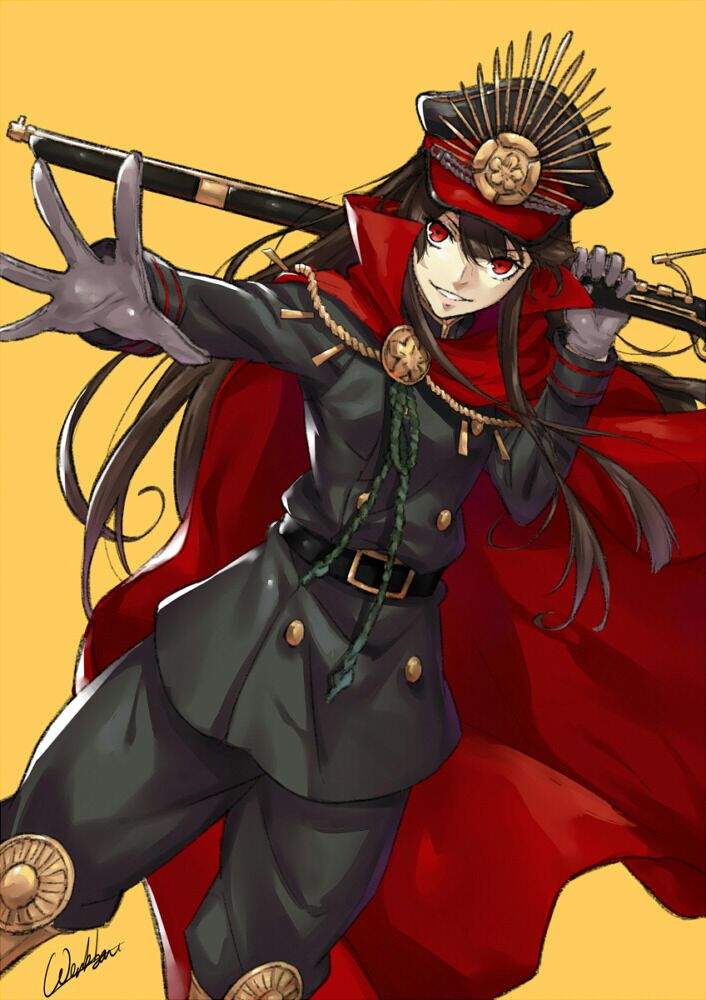
In 1583, he later allied with Shibata Katsuie and Takigawa Kazumasu to start a war against Hideyoshi, but while Nobutaka was surrounded at Gifu Castle by Nobukatsu, Katsuie lost the Battle of Shizugatake and Kazumasu lost at Kameyama, forcing Nobutaka to surrender. Nobutaka gained Mino Province where the eldest son, Oda Nobutada had ruled before his death by Mitsuhide, but this was still far short of what he had hoped to gain. Nobutaka and his brother Oda Nobukatsu then quarreled over Nobunaga's succession at a council held in Kiyosu Castle until Oda Hidenobu was declared heir. Nobutaka then joined Hashiba Hideyoshi who had turned back from his own campaign, and they fought the Akechi forces at the Battle of Yamazaki. While Nobutaka's suspicion did make some sense, no evidence had turned up that would connect Nobusumi to Mitsuhide. Nobutaka turned back and at Osaka, killed Nobusumi, who was married to a daughter of Mitsuhide. While readying his army to cross the sea at Sakai, Nobunaga died at Honnō-ji during an attack by Akechi Mitsuhide.

In 1582, Nobutaka was commanded to lead an army against Shikoku and had such retainers as Niwa Nagahide and Tsuda Nobuzumi, who was the son of Nobunaga's younger brother Nobuyuki, under his command.

In 1577, he besieged Ōta Castle (near the site of present-day Wakayama Castle) and defeated Jōdo Shinshū Buddhist (Saika Ikki) uprising in Kii province. Nobutaka was reported by missionaries to have a better character than the older Nobukatsu but was ranked lower and held less area than he did. The next year, his elder brother, Nobukatsu, became an adopted member of the Kitabatake clan, and ruled a much larger area of southern Ise Province. In 1568, after Nobunaga controlled Ise Province, Nobutaka was installed as the head of the Kanbe clan, whose seat was Kanbe Castle, near present-day Suzuka, Mie. His mother was a concubine named Sakashi. Nobutaka was born as the third son of Oda Nobunaga and he was called San Shichi, possibly because he was born on the seventh day of the third month, in the Japanese lunar calendar system. He was adopted as the head of the Kanbe clan, which ruled the middle region of Ise Province and so he was also called Kanbe Nobutaka. Note: Quoted from the campaign which collaboration of the Ikusa no ko and City of Nagoya.Oda Nobutaka (織田 信孝, 1559–1583) was a samurai and member of the Oda clan. In addition to achievement in military affairs/diplomacy, in other words, the formation of the Sangoku Domei (Takeda Shingen, Hojo Ujiyasu, and Imagawa Yoshimoto alliance), Yoshimoto also demonstrated his remarkable talents in internal affairs through efforts including the establishment of 21 articles of Imagawa Kana Mokuroku Tsuika (expanding on the Imagawa family rules), earning the nickname “Kaido Ichi no Yumitori" ("The Number One Samurai of the Tokaido region"). He fought against Oda Nobunaga’s father Nobuhide which resulted in expanding his influence which extended to and over Mikawa Province. Imagawa Yoshimoto was a daimyo (feudal lord) during the Sengoku period who ruled Suruga Province and Totoumi Province, and was the 11th head of the Imagawa clan. Although Nobunaga was dubbed as “Owari’s Great Fool” due to his strange appearance and behavior up until his adolescence, some say that this was a trick to throw off his internal and external adversaries. He basically united Owari Province one year before the Battle of Okehazama by controlling both conflict with the governor and acting governor of Owari Province, and discord within the Oda clan. After Nobuhide’s death, Nobunaga succeeded him as the head of the Oda clan at the young age of 19.

Oda Nobunaga was born as the heir of Oda Nobuhide, a daimyo (feudal lord) of Owari Province during the Sengoku period, and later became lord of Nagoya Castle.


 0 kommentar(er)
0 kommentar(er)
